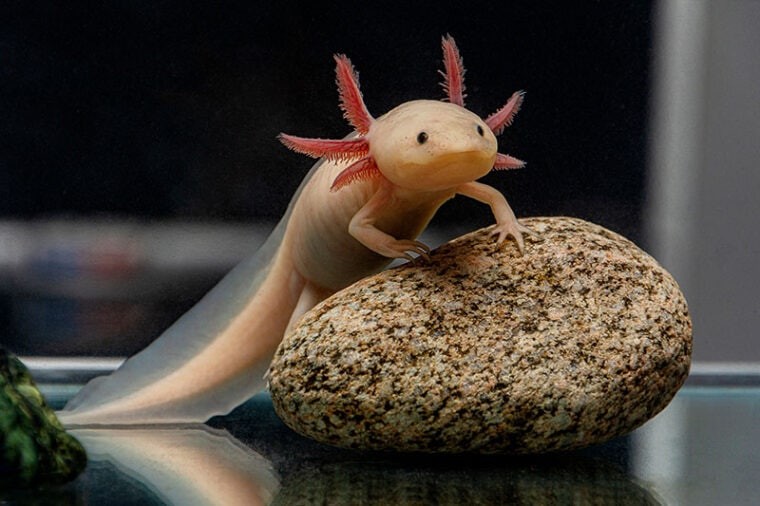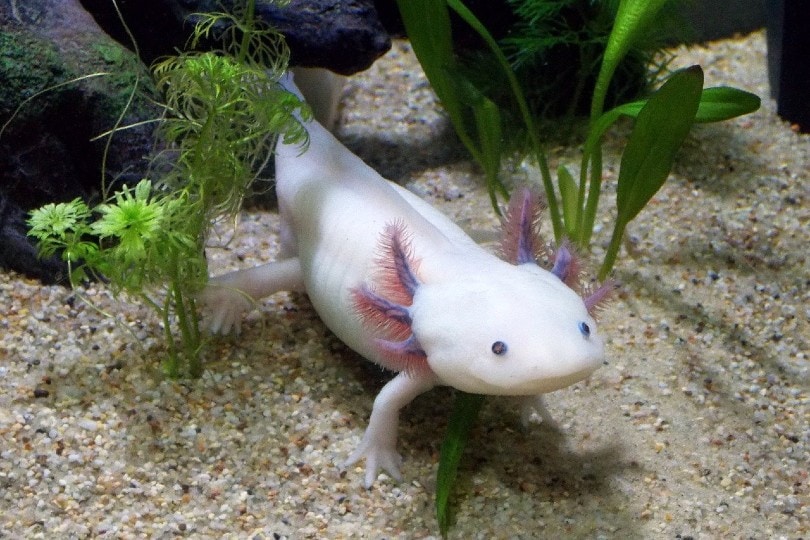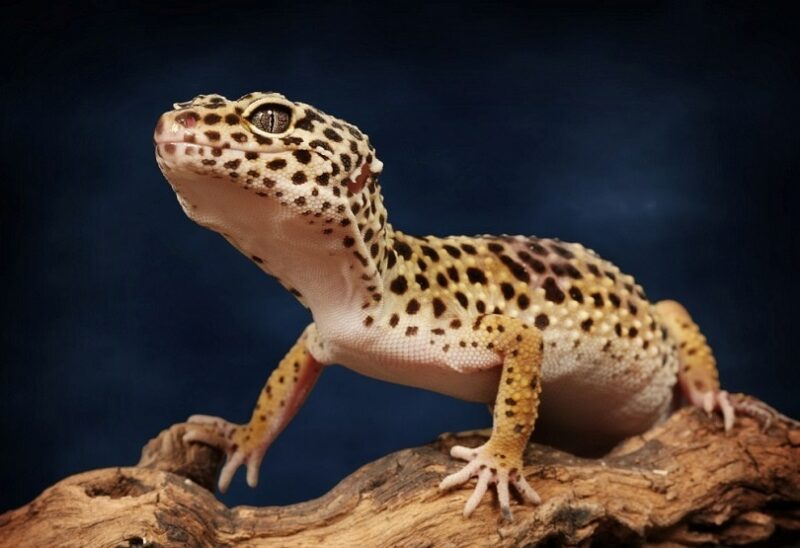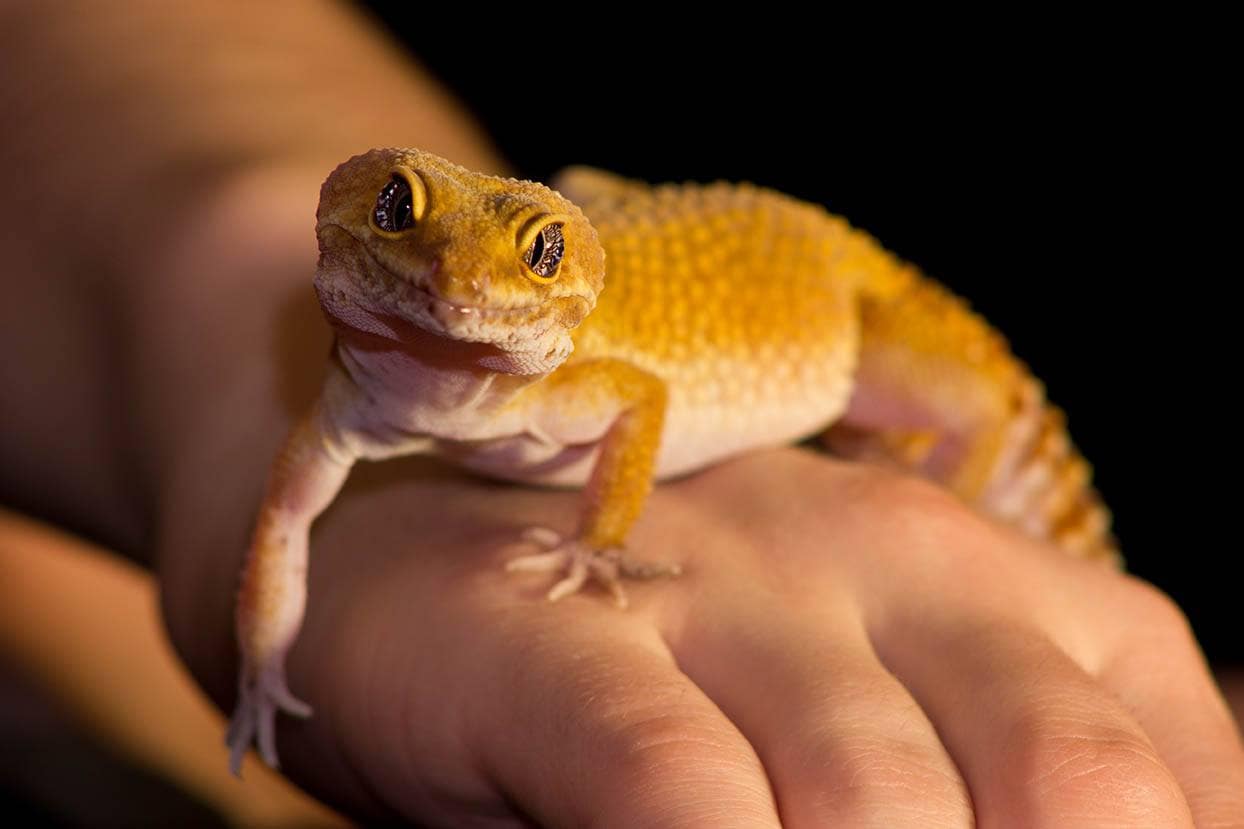
Axolotls are interesting-looking animals that have gained Internet fame over recent years. Their popularity was boosted through social media and being featured in video games.1 While they’re often mistaken for fish, they’re actually a species of salamander, and salamanders are amphibians.
Axolotls are fascinating, as they spend their entire lives in water. Their rise in popularity has opened many opportunities for more people to become educated and aware of axolotl care and conservation efforts.
What Is an Axolotl?
The axolotl, or Ambystoma mexicanum, is a carnivorous amphibian. It has a set of feathery gills on each side of its face, a long dorsal fin, and webbed feet. It can grow to about 12 inches in length, weigh between 2-8 ounces, and live between 10-15 years.
Wild axolotls often have a muddy and speckled appearance, while pets have been bred to have different colors. The most common pet axolotl color is pink, but you can find some that are gold, copper, black, or a mix of these colors.
Axolotls are native to Mexico, and their natural habitat is in Lake Xochimilco, which is located in the Valley of Mexico. They got their name from Xolotl, the Aztec god of fire and lightning. Their name means “water monster” in Nahuatl, an ancient Aztec language.
One thing that makes axolotls unique is that they undergo neoteny, which is the retention of juvenile traits.1 Salamanders typically undergo four main life stages. They start as eggs and then hatch into larvae. The larvae live and grow in water. As they move onto their juvenile stage, they’ll begin to grow limbs, and their tails will grow longer. They’ll also start losing their gills and developing lungs that function out of water. When salamanders become mature adults, they live on both land and in water.
Axolotls, on the other hand, never lose their gills and remain in the water for the rest of their lives. They live in brackish water, which is a mix of fresh water and salt water. Adult axolotls are carnivorous and typically eat insects, worms, and small fish.

Do Axolotls Make Good Pets?
While axolotls have become popular, they’re not recommended as pets for novice pet owners and young children. They require the expertise of an experienced pet owner that has taken care of amphibians and is familiar with their needs.
Axolotls have very sensitive skin, so they’re greatly affected by subtle changes in water quality and temperature. Their tanks need to hold at least 20 gallons of water, and their water has to be filtered constantly.
An added challenge to caring for axolotls is that there are very few veterinarians that can see and treat them. So, it can be extremely difficult for inexperienced owners to tend to any illnesses and infections their axolotls may develop.
If you have experience caring for frogs and salamanders, an axolotl can be an excellent new challenge. With proper care, axolotls can be wonderful pets. They’re known to be very docile and rarely show any aggression.
They can live with other axolotls that are the same age and roughly the same size, but it’s important to add an additional 10 gallons to the tank size to prevent competition for space. Juvenile axolotls can exhibit cannibalism, so it’s best to pair two mature adults in the same tank. Axolotls can live with other freshwater fish, but it’s not recommended because there’s no guarantee they’ll refrain from eating the smaller fish.
Legalities
If you’re interested in caring for an axolotl, make sure to check that axolotls can be legally kept as pets in your state. California, Maine, and New Jersey are some states that ban axolotls as pets, while other states require a permit.
It’s also important to keep in mind that wild axolotls are critically endangered. So, if you don’t have the capacity to care for an axolotl as a pet, you can always support conservation efforts that are working towards protecting the wild axolotl population and its natural habitats.
Conclusion
Axolotls have gained much attention over the years, and their unique appearance and gentle temperaments have made them popular pets. While caring for an axolotl can be enjoyable, it’s also a serious commitment as they can live for about 15 years and they have a very particular tank setup.
Fortunately, there are other ways to enjoy and celebrate axolotls. They can be found in exhibits at aquariums and zoos, or you can support organizations that advocate for conservation efforts. We love that axolotls have become so popular in recent years and hope that their rise to fame continues to push education and care to protect both their domestic and wildlife populations.
Featured Image Credit: Iva Dimova, Shutterstock









